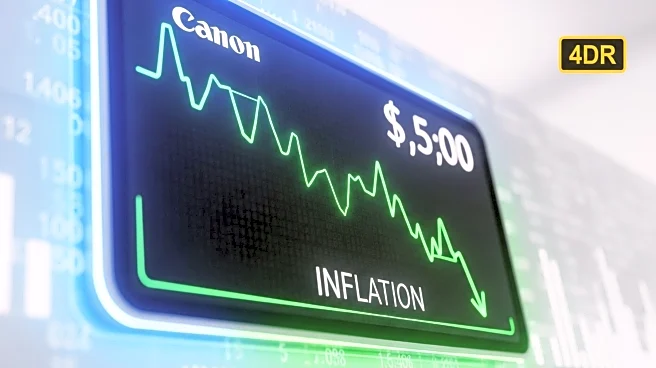What's Happening?
The latest Consumer Price Index data shows a year-over-year inflation rate of 2.9% in August, up from 2.7% in July. This increase is nearly a full percentage point above the Federal Reserve's target rate of 2%, highlighting ongoing challenges in achieving price stability. The rise in consumer prices is linked to President Trump's tariff measures, which have increased import costs. The Federal Reserve's upcoming policy meeting on September 17 is expected to address these inflationary pressures, with market participants anticipating an interest rate reduction. The magnitude of the rate cut remains debated, with options ranging from a modest 25 basis point decrease to a more aggressive half-percentage point reduction.
Why It's Important?
The inflation data is crucial as it influences monetary policy decisions, impacting financial markets and economic stakeholders. The Federal Reserve's response to inflationary pressures will affect interest rates, which in turn influence borrowing costs, consumer spending, and investment. Precious metals markets have reacted to these developments, with gold futures experiencing a modest decline and silver futures posting gains. The Fed's decision will have implications for both domestic and global markets, as investors closely monitor the central bank's approach to managing inflation and supporting economic growth.
What's Next?
The Federal Reserve's September meeting will be pivotal in establishing the trajectory of monetary policy for the remainder of the year. Policymakers must balance inflationary pressures with broader economic conditions, including employment and market expectations. The outcome of the meeting will guide future rate adjustments and influence economic stability.











